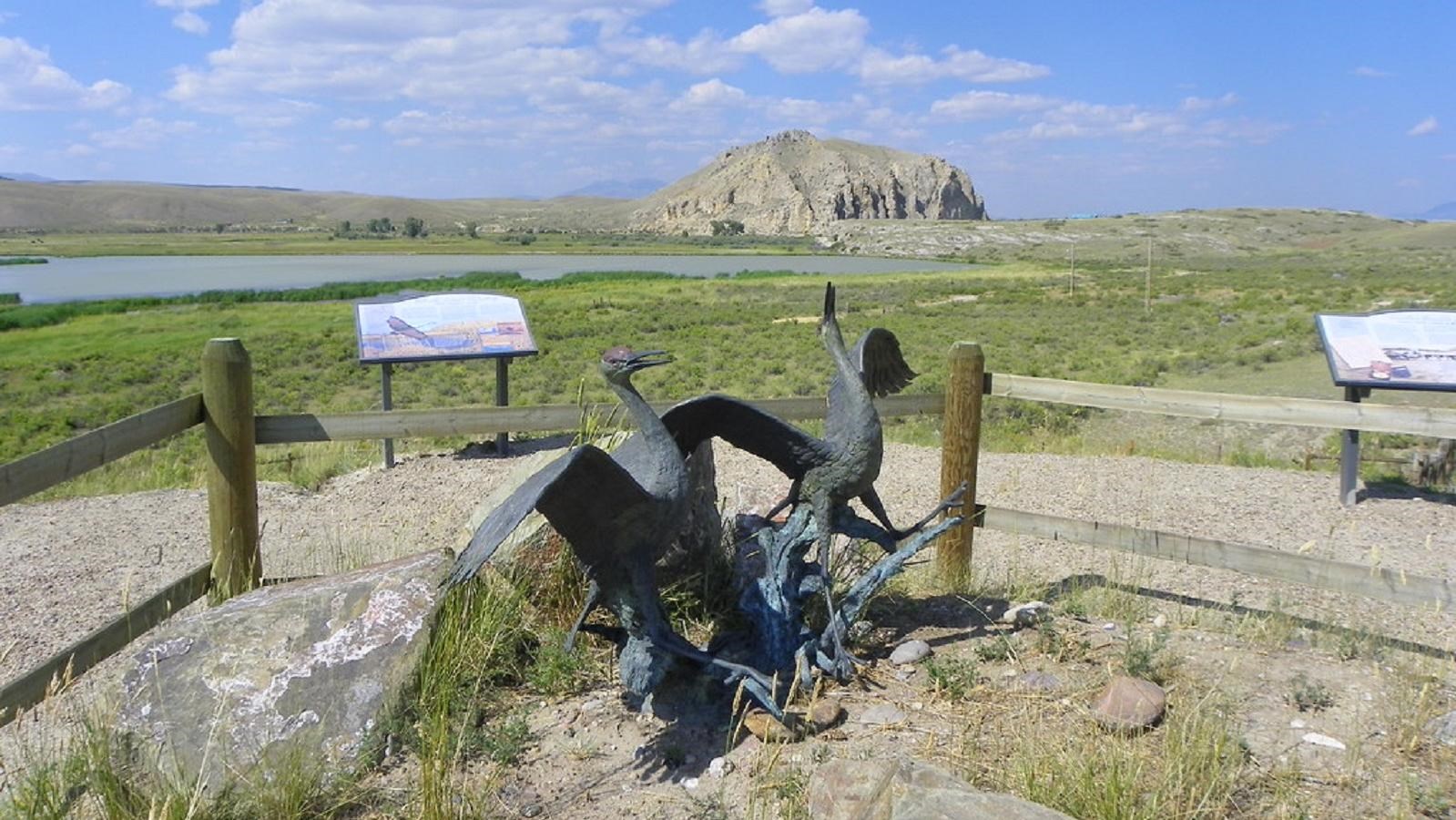Last updated: December 30, 2021
Place
Beaverhead Rock State Park

"Crane Sculpture at Beaverhead Rock Overlook" by J. Stephen Conn is licensed under CC BY-NC 2.0
Beach/Water Access, Historical/Interpretive Information/Exhibits, Information, Parking - Auto, Parking - Bus/RV, Scenic View/Photo Spot
Lewis and Clark NHT Visitor Centers and Museums
This map shows a range of features associated with the Lewis and Clark National Historic Trail, which commemorates the 1803-1806 Lewis and Clark Expedition. The trail spans a large portion of the North American continent, from the Ohio River in Pittsburgh, Pennsylvania, to the mouth of the Columbia River in Oregon and Washington. The trail is comprised of the historic route of the Lewis and Clark Expedition, an auto tour route, high potential historic sites (shown in black), visitor centers (shown in orange), and pivotal places (shown in green). These features can be selected on the map to reveal additional information. Also shown is a base map displaying state boundaries, cities, rivers, and highways. The map conveys how a significant area of the North American continent was traversed by the Lewis and Clark Expedition and indicates the many places where visitors can learn about their journey and experience the landscape through which they traveled.
Sacagawea, a young Shoshone Indian guide traveling with the Lewis and Clark Expedition in 1805, recognized this rock formation and knew that she may be in the vicinity of her relatives. The sighting gave the expedition hope that they may be able to find native peoples from which to acquire horses for their trip across the mountains to the Pacific Ocean.
Meriwether Lewis wrote on August 8, 1805:
“The Indian woman recognized the point of a high plain to our right which she informed us was not very distant from the summer retreat of her nation on a river beyond the mountains which runs to the west. This hill she says her nation calls the beaver’s head from a conceived resemblance of its figure to the head of that animal. She assures us that we shall either find her people on this river or on the river immediately west of its source; which from its present size cannot be very distant.”
Resembling the head of a swimming beaver, this natural landmark is listed in the National Register of Historic Places. The site may be viewed and photographed from a distance, but is not directly accessible.
